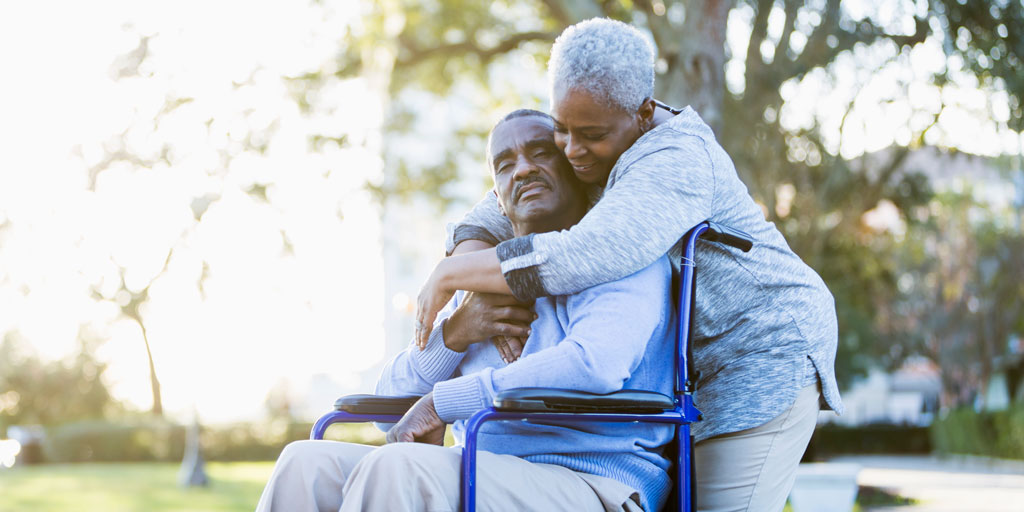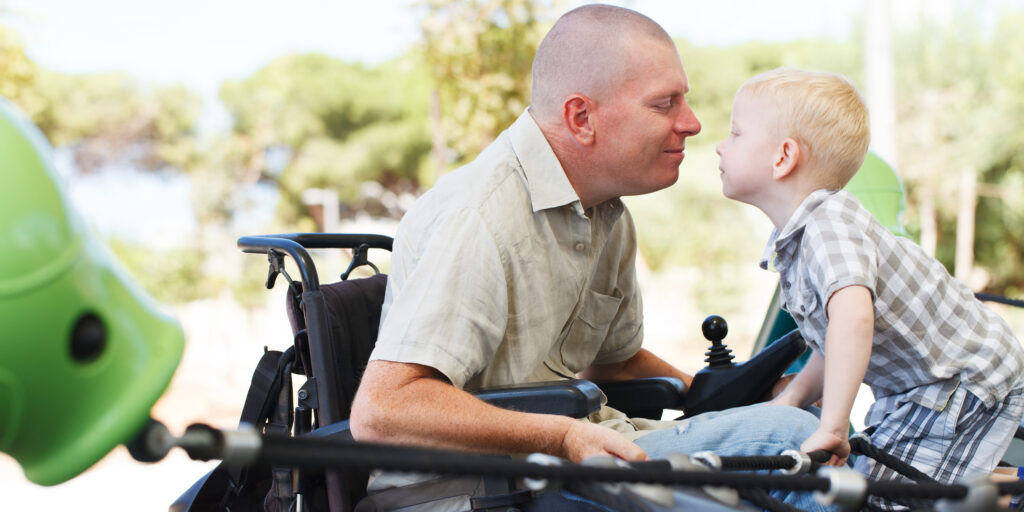
Aging and Neuromuscular Disease Share Symptoms – and Solutions
By Shaila Wunderlich | Friday, September 10, 2021
With age often comes the maturity and grace to accept the world and oneself. That’s a good thing, because it takes every bit of that maturity to differentiate the aging process from the progression of a neuromuscular disease.
Neuromuscular disease comes with certain physical limitations that can also look like aging — loss of strength, agility, and range of motion. When you combine aging with neuromuscular disease, the symptomatic sum can be greater than its parts.
Daniel Drachman, MD, a neurology professor at Baltimore’s Johns Hopkins University, studied the neuromuscular effects of aging in rats in 1980. As director of The Johns Hopkins MDA Care Center for 40 years, he also observed the effects of neuromuscular disease in humans. “Beyond the age of 20, every person begins to slowly lose motor nerve cells and muscle tissue, and they continue to lose them as time goes on,” Dr. Drachman says.
While it’s not all downhill after 20 (Dr. Drachman himself cycled 4,000 miles cross-country at age 58), any condition causing further loss of motor nerve cells and muscle, such as a neuromuscular disease, will compound the issue. “Neuromuscular disease further damages the existing nerve cells as time goes on, as does aging,” Dr. Drachman says.
What’s causing symptoms
Living with neuromuscular disease through middle age and beyond can, at best, make it difficult to tell what’s behind new symptoms. At worst, it can confuse diagnoses and cloud treatment strategies.
“On one hand, it doesn’t really matter what’s causing a certain symptom; we can slow its progression with certain interventions,” says Nancy Shepard, a physical therapist at Integris Southwest Medical Center in Oklahoma City.
However, when considering a new medication, it may be important to sift out whether aging or disease is causing a set of symptoms. “More and more, we are coming up with new medications for neuromuscular diseases, like infusions for spinal muscular atrophy (SMA),” Nancy says. “It’s important to know your medical history and have a genetic diagnosis so that you’re not missing out on those opportunities.”
Similarly, it’s important to be aware that injuries can have farther-reaching repercussions to an individual with neuromuscular disease than they do to others of the same age. “Injuries that occur from a fall — even something as simple as a broken ankle — can put you in bed for a while,” Nancy says. “And in the time you spend recuperating, you’re going to lose muscle strength and function. It’s better to prevent that.”
Optimize and maintain function
As one ages with neuromuscular disease, it becomes even more important to optimize the functionality you have. “It’s more about staying active and independent than getting strong,” says Abby Yenzer, a physical therapist at Washington University in St. Louis. “We want you to be able to continue showering, dressing, and shaving for as long as possible. Or, if you can still achieve transfers, let’s maintain that.”
Physical therapy, medication, and assistive devices can help maintain your activity level and foster independence. For example, “many people with inclusion-body myositis (IBM) can still walk but have a hard time getting out of a chair,” Abby says. “Something like having a tall cushion or an elevation feature in a wheelchair can make all the difference in being able to continue walking.”
For exercise, the focus is on maintaining functional strength and range of motion. “We’re working to prevent disuse atrophy,” Abby says. “If you don’t use it, you lose it — that applies to every living being, whether they have neuromuscular disease or not.”
Where exercise is different for people with neuromuscular disease is in its intensity. “You don’t want to push yourself to the point of pain or fatigue,” Abby says. With some neuromuscular diseases, overexertion can lead to exhaustion, cramps, or muscle breakdown. “If it hurts, or if at the end of the day you’re so sore or tired you have a hard time pushing through your daily routine, you’ve probably pushed it too far,” Abby says.
The most recommended activity for people with neuromuscular disease is swimming. “It’s low-impact and low-risk for injury,” Abby says.
Though there is no fountain of youth, nor any “cure” for neuromuscular disease, your care team can help you find strategies to slow down the effects of neuromuscular disease that can be exacerbated by aging and maintain physical condition as much as possible, for as long as possible.
“There’s no magic solution, but there are many things that can help,” Dr. Drachman says. “We’re learning more and more every day.”
To learn about genetic testing options and how to find an MDA Care Center provider, contact MDA’s National Resource Center at (833) ASK-MDA1 or ResourceCenter@mdausa.org.
Disclaimer: No content on this site should ever be used as a substitute for direct medical advice from your doctor or other qualified clinician.




